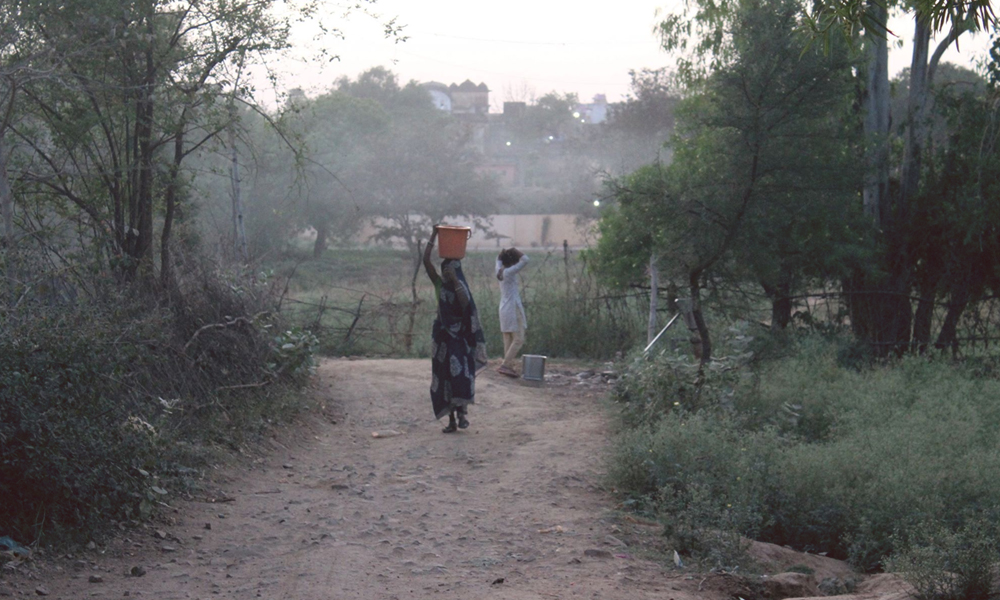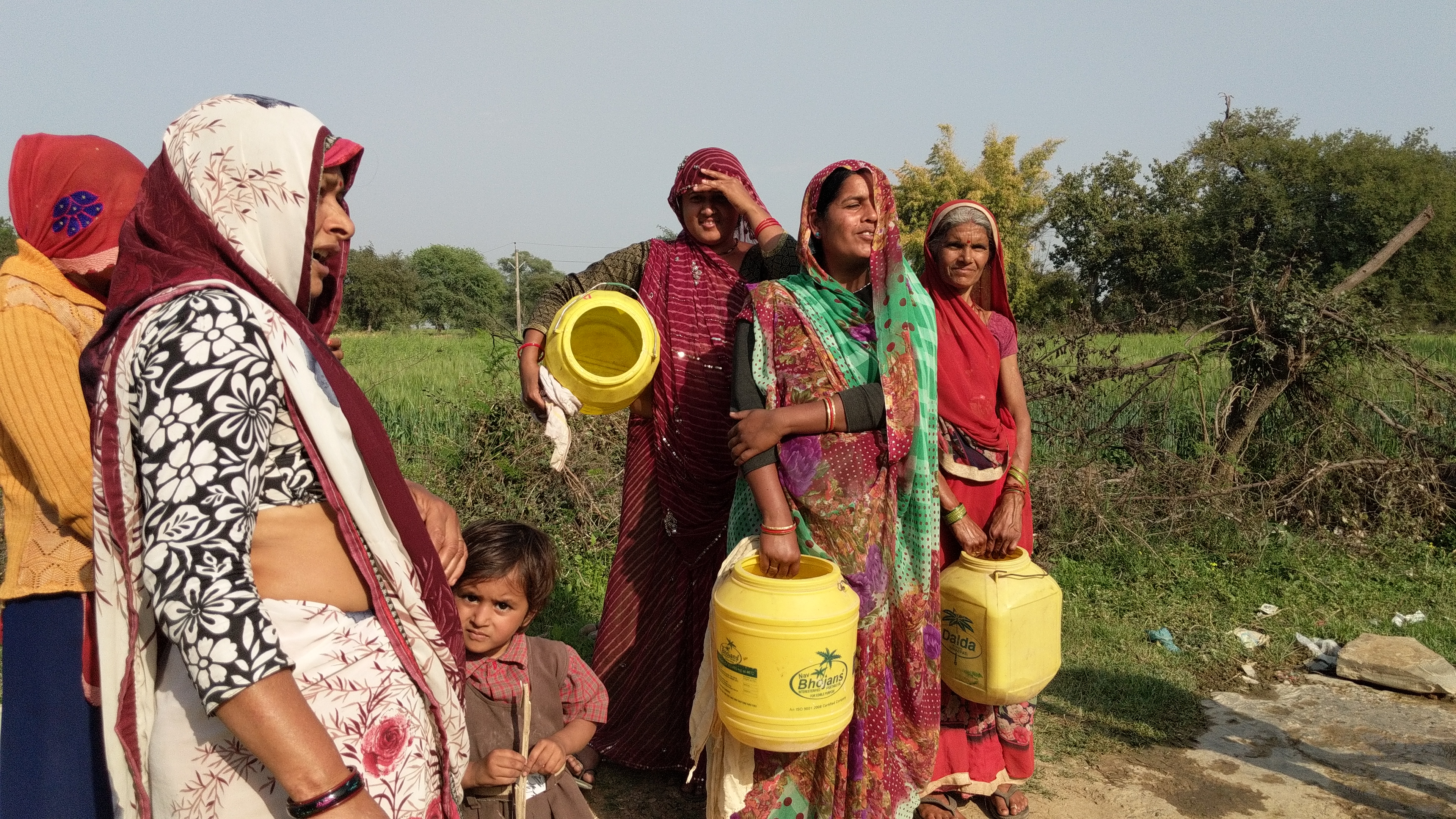
"What Do We Prioritise, Social Distancing Or Water?": Thirst Forces Bundelkhand's Women To Ignore Lockdown
Uttar Pradesh, 24 April 2020 12:55 PM GMT | Updated 2 May 2020 9:40 AM GMT
Water scarcity is common in several villages in the Bundelkhand region where residents solely depend on the hand-pumps and/or wells for water. Social distancing amidst lockdown 2.0, therefore, is a challenge for the residents.
It's five in the evening and Manisha is busy gathering all the empty buckets from her house. She is rushing for the hand-pump in her hamlet Sudarma Nagar under Nayagaon area of Majhgawan block in Satna district. It's time to bring water from the pump. "Are you both coming or should I go alone?" Manisha Verma called her two younger sisters as she waited for them at the door. "We have to reach there before they all arrive or else we are last in the queue," she added.
Water scarcity is common in several villages in the Bundelkhand region where residents solely depend on the hand-pumps and/or wells for water. Social distancing amidst lockdown 2.0, therefore, is a challenge for the residents of these villages.
Manisha goes to the hand-pump with her two younger sisters every day which is around 200 metres from her house. Once all the buckets are filled, her father helps them in carrying the water. Manisha is a 14-year-old girl, eldest of her four sisters. She is a class fifth student in the nearby primary school. "Papa will come and take the bigger ones (buckets). We will meanwhile fill water in these all," Manisha says. "There would be more people. Two of my friends also come there because everyone needs water," she adds.
With the arrival of Summer, the water level in the wells and hand-pumps of villages has started falling already. The challenge of fetching water for even the mundane works haunts the people living in its rural areas, specifically.
Mostly women of the house would go to the community hand-pumps or wells during sunrise and sunset given the rest of the day is too hot to walk with two buckets full of water to their respective houses.
Suman Prajapati, a 21-year-old girl of village Rajaula in Satna, spends two hours every day in fetching water. "One hour in the morning and one in the evening. This is when we can walk through the way to the hand-pump. We would faint on the road if walk during the hot afternoons. Evening and morning is the time for everyone in the village. We try to not stand very close, but not everyone cooperates. Anyway, what do we prioritise, social distancing or water?" Suman says.

Suman lives in a family of six - parents, two elder brothers and a younger sister. At times, her sister would accompany her to one of the three hand-pumps of her village which is the closest. But today she has come alone. Suman tells how they are scared that now very soon their hand-pump could run dry and would have to eye a tanker.
"The situation is still better now than it would be in June. The hand pumps run dry by June. Though we get water tankers but not regularly. When we run short of water, we have to request our neighbours to give some. Summers always haunts us," she adds.
Garima Yadav, a 40-year-old resident of Mahkona in Chitrakoot district Satna fiddles with the hand-pump, which had probably gone dry. Garima kept her bucket in the queue where other women of the village already stand, according to their arrival. "This won't start functioning till someone pumps it for half an hour or so. It would again go dry when not in use for an hour or so, and then we'll have to start the process all over again," Garima said.
According to a Central Ground Water Board (CGWB), Ministry of Water Resources report, "Underground water level has been depleting fast in the past 10 years in Madhya Pradesh. But the water is getting replenished at a slower rate and that too, only in some areas."
However, Banda, another district of Bundelkhand which is located in Uttar Pradesh, has done some preparations in the past two years. A massive administration led a campaign called 'Bhoojal Bachao, Peyjal Badhao', was actively taken forward by the residents. Under the campaign several ponds were revamped, wells were cleaned and connected to rainwater. The district administration with the help of NGOs made Jal-Chaupal at Gram Panchayat level to monitor the participation of residents. The campaign ended in December 2019 getting a place in Limca Book of Records but the residents still follow the measures to buck up with the drought-like situation.
Malkhee Srivas is the Mukhiya of Gram Panchayat Mahuee's Jal-Chaupal. Mahuee is located in block Tindwari of Banda. "Till last year the wells would start drying up by this time but as of now, they are all still recharged. The water level in the wells which would go 90 ft and beneath is around 60 ft right now. We don't know what would happen next month and in June though, but we are hoping the best," Malkhee Srivas said.
According to the 2018 report of the United Nations Educational, Scientific, and Cultural Organization (UNESCO), India is the world's largest consumer of underground water, followed by China and then America.
The main reason behind depleting underground water level is the continuous mining of water for both, use and misuse. According to a report published in India Spend in July 2016, there are around 30 million structures nationwide for drawing groundwater.
Also Read: COVID-19: A Wake-Up Call For The World To Put A Check On Environmental Hazard
 All section
All section













